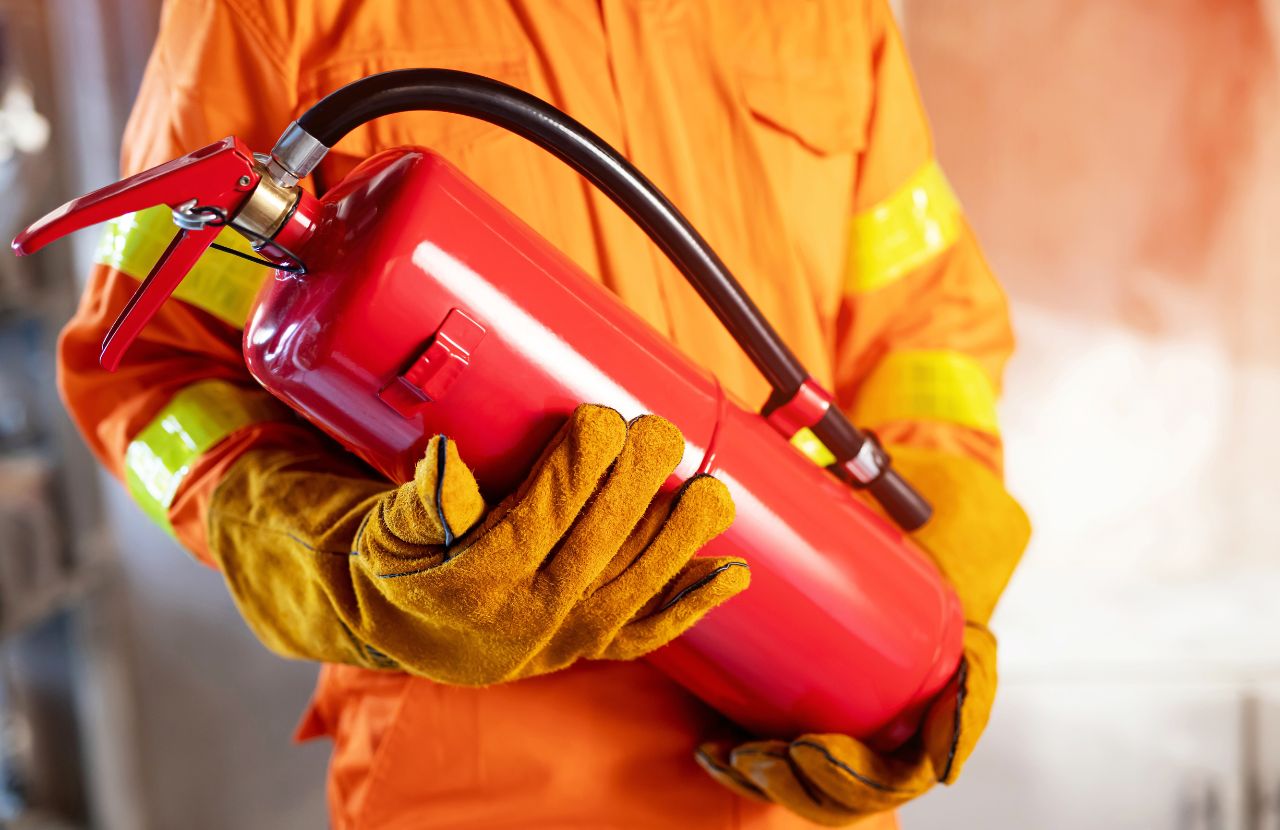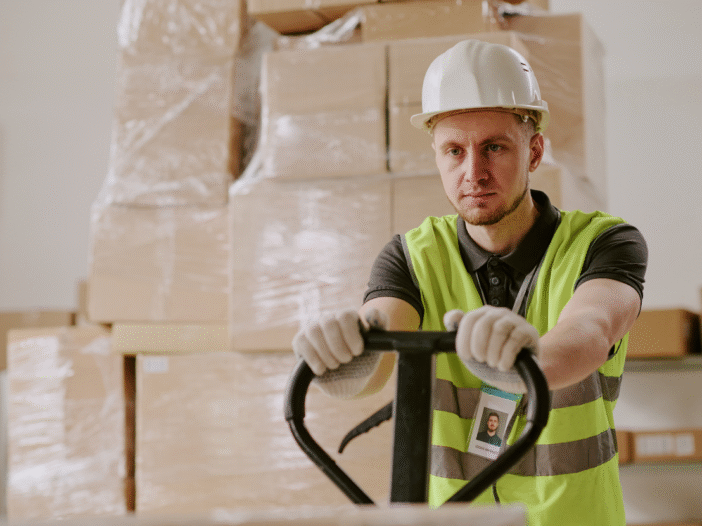
On 1st October 2023 amendments to the Regulatory Reform (Fire Safety) Order 2005 came into force to improve fire safety in most buildings that are not individual private homes. The Fire Safety Order has been strengthened through changes to Section 156 of the Building Safety Act 2022.
Amendments to the Fire Safety Order place additional duties on Responsible Persons (also known as ‘Duty Holders’) to record fire safety information and keep it up to date. They must also share information with other Responsible Persons and Accountable Persons in their building and, depending on the building type, private residents too. Changes to the Fire Safety Order also include increased fines for non-compliance.
The aim of the amendments is to make fire safety more robust to ensure everyone is safer and organisations themselves are better protected from fire.
What do the amendments mean for the Responsible Person?
Here is a comprehensive but simple guide to the amendments, how they impact the role of the Responsible Person and the practical steps to take. The Home Office’s guidance to support Responsible Persons also explains a Responsible Person’s duties under Section 156 of the Building Safety Act 2022.
Document your fire risk assessment
Amendments to the Regulatory Reform (Fire Safety) Order 2005 make it a legal requirement for a Responsible Person to comprehensively document their fire risk assessment, fire safety action plan and all relevant fire safety information. The fire safety action plan documents how hazards and risks in the fire risk assessment will be reduced and the protection measures in place.
Before 1st October 2023 the requirement for recorded documents only applied in specific situations, such as when five or more people were employed. Now the requirement applies regardless of how many people are employed and the purpose of the premises.
Record fire risk assessor details
Under the amendments, if a Responsible Person engages a fire risk assessor to carry out a fire risk assessment on their behalf, they must document the name of the individual and the company they work for.
Section 156 (4) of the Building Safety Act states that a Responsible Person must only appoint someone to assist them if that person is ‘competent’. However, the government did not enforce this on 1st October, but has indicated they will to do so in future.
In any case, it is strongly advisable to only use the services of a competent fire risk assessor who has the expertise to identify hazards in different environments and circumstances. They have a thorough understanding of human behaviour during fire incidents, fire progression and the procedures to follow to protect vulnerable groups.
Record fire safety information
All fire safety information must now be recorded. Recording information supports a carefully planned and more robust approach to fire safety. It enables ongoing monitoring of safety protocols, facilitates information sharing and helps to demonstrate that the Responsible Person is managing fire safety competently.
Records may include:
- Fire safety logbook – the logbook records fire safety information, including records of fire drills, equipment checks, maintenance, and any fire-related incidents. It serves as a comprehensive record of fire safety activities.
- Emergency evacuation plan – a clear, detailed plan should be available that outlines how occupants and visitors should evacuate the premises in the event of a fire. It should include escape routes, assembly points and any specific duties for staff members during an evacuation.
- Fire safety policy – this document sets out the organisation’s commitment to fire safety and the responsibilities of employees and management in maintaining a safe environment. It should also specify who the Responsible Person is.
- Fire safety training records – a record of fire safety training provided to employees, including dates, topics covered, and names of attendees. Regular fire drills should also be documented.
- Fire safety equipment records – these are records of inspections, tests, and maintenance of fire safety equipment such as fire extinguishers, alarms, sprinkler systems and emergency lighting.
- Fire safety procedures – procedures for reporting and responding to fires, including the use of fire extinguishers, raising the alarm, and contacting emergency services.
- Fire safety risk register – this document can be used to record specific fire risks and track the actions taken to reduce or eliminate those risks.
- Fire drill records – this document gives the dates, times, and outcomes of fire drills, including any issues identified and improvements made.
- Fire safety records for high-risk activities – if a workplace engages in high-risk activities that pose additional fire hazards, specific records may be needed that relate to those activities and associated fire safety measures.
It is important to note that the specific requirements for fire safety documents will vary depending on the size and nature of an organisation. Regular reviews and updates of documents are essential to constantly maintain a high level of fire safety.
Share information
Under the changes, Responsible Persons must take reasonable steps to identify the existence of other Responsible Persons in their building and, when relevant, Accountable Persons. These individuals or entities may share fire safety duties with them.
For information, an Accountable Person is an individual or an organisation that owns a building or has a legal responsibility to repair communal areas. Sometimes the Accountable Person is also the person responsible for fire safety (the ‘Responsible Person’ under the Regulatory Reform (Fire Safety) Order 2005). Responsible Persons have a legal duty to co-operate with every Accountable Person in their building, to enable each Accountable Person to fulfil their duties under the Building Safety Act 2022.
Responsible Persons are legally required to maintain and update their contact information, including a UK address. They must share their contact information with other Responsible Persons and Accountable Persons on the premises and, if applicable, the residents of a multi-occupied residential premises (see below).
Responsible Persons must tell each other and Accountable Persons (where applicable), what part of the building they are responsible for and keep a record of this information. They must share their fire risk assessments and details of fire safety measures that are in place. It is advisable for each Responsible Person to keep a record of what information they have shared, who they have shared it with and the date, in case they are ever required to provide evidence of information sharing.
The requirement to share information aims to enhance fire safety by ensuring each Responsible Person has a clear understanding of their duties and communicates and coordinates effectively.
Prepare a smooth handover
If there is going to be a new Responsible Person, the Responsible Person who is leaving must tell any other Responsible Persons in the building. They must also share all ‘relevant fire safety information’ with the new Responsible Person.
Under Article 22A of the Building Safety Act 2022 ‘relevant information’ means ‘any relevant fire safety information held by the outgoing person’.
As a minimum, this information will include:
- A fire risk assessment.
- The identity of any person appointed to make or review a fire risk assessment.
- Names and UK addresses of other Responsible Persons or Accountable Persons in the building.
- Information about fire safety equipment and systems, including details of maintenance schedules and test records.
- Emergency evacuation plans and procedures.
- Fire safety training records.
- Fire safety policies and procedures.
- Fire safety information for residents or occupants (see below).
- Contact information for individuals and organisations responsible for maintaining or servicing fire safety equipment and systems.
Communicate with residents
When a building contains at least two sets of domestic premises, it is now a legal requirement for a Responsible Person to provide residents with fire safety information they can understand. This includes making information accessible to those with learning difficulties and those who speak English as a second language.
Under Article 21A of the Building Safety Act 2022, the Responsible Person must provide residents with the following information:
- Any risks to residents identified in the fire risk assessment.
- Fire safety prevention and protective measures in place for the safety of all occupants.
- The name and UK address of the Responsible Person or someone acting on their behalf.
- The identity of the person who made or reviewed the fire risk assessment (the Fire Risk Assessor).
- The identity of any competent persons the Responsible Person has nominated to implement fire safety measures. This includes engineers who carry out maintenance of fire safety equipment (fire alarms, emergency exit lighting, fire extinguishers and emergency exits).
- Any fire risks the Responsible Person has been made aware of by other Responsible Persons or Accountable Persons in the building.
- All relevant matters specified in fire safety regulations. This includes sharing emergency evacuation plans, details about how to report a fire and more.
The Fire Safety England Regulations 2022 already specify what information a Responsible Person must provide for residents, but these new requirements go further. Responsible Persons must now provide information to residents as specified under the Fire Safety England Regulations 2022 as well as the amendments to the Regulatory Reform (Fire Safety) Order 2005.
What are the penalties for non-compliance?
Amendments to the Regulatory Reform (Fire Safety) Order 2005 increase the fines for fire safety offences. For the Responsible Person, offences include failure to comply with ‘specific requirements imposed by a fire inspector’ without ‘reasonable excuse’. For example, failure to provide a risk assessment when requested incurs a larger fine than before.
Failure to comply with ‘requirements relating to the installation of luminous tube signs’, can now result in an unlimited fine.
In court proceedings for alleged offences, judges can now establish that a Responsible Person has breached the Fire Safety Order if they have failed to comply with guidance provided by the Secretary of State under Article 50 of the Fire Safety Order.
Do you need a robust fire safety compliance audit?
At Praxis42 our fire safety consultants have years of experience carrying out fire safety audits for all kinds of organisations. We can ensure your organisation complies with all current fire safety regulations, including changes to the Regulatory Reform Fire Safety Order 2005.
Our fire safety assessors identify potential compliance issues and craft pragmatic solutions that are specifically tailored to your organisation’s activities, occupants and building type.
For your peace of mind, we can act as a competent person on your behalf by managing all aspects of fire safety, to protect both the occupants of your building and the future of your organisation.

Rob Sherman
Director of Fire Safety
